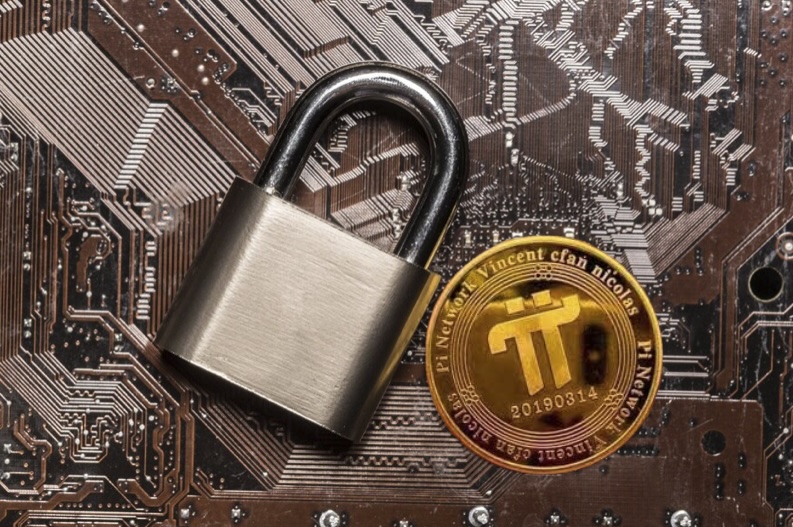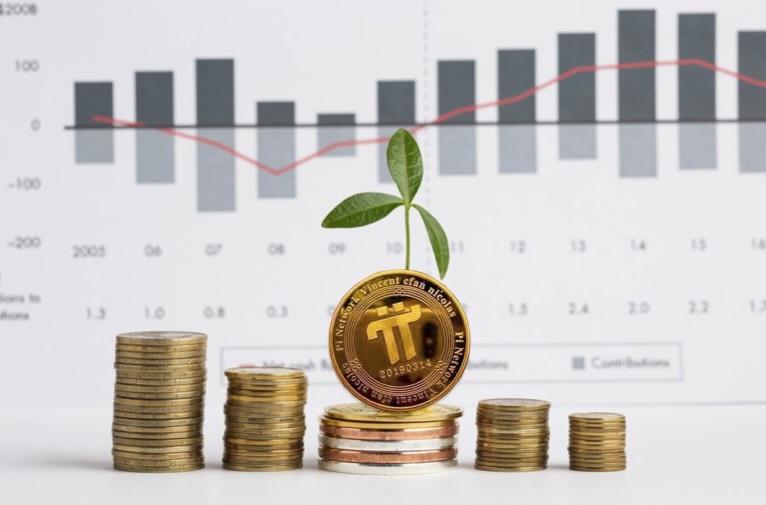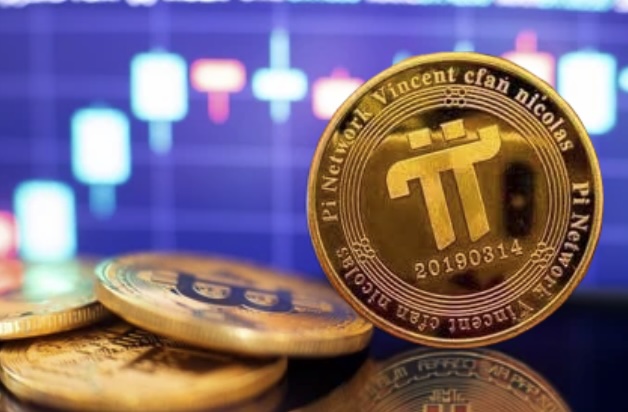Pi Coin has been a topic of great intrigue and speculation since its inception. With the promise of a new cryptocurrency easily mined on smartphones, many are now wondering, “When can I sell Pi Coin?” This article explores this question in depth, examining the current status of Pi Coin, its market prospects, and the practical steps you might take when looking to sell.
Understanding Pi Coin: A Brief Overview
Pi Coin is a digital currency developed by a team of Stanford graduates aiming to create a more inclusive and accessible form of cryptocurrency. Unlike Bitcoin and Ethereum, which require significant computing power to mine, Pi Coin enables users to mine coins on their smartphones through the Pi Network app. As the network grows, the mining rate decreases, making early participation potentially more rewarding.
The Launch and Development Stages of Pi Coin
Pi Coin’s development is segmented into three phases:
Phase 1: Design and Token Distribution
During the initial phase, known as Design and Token Distribution, the groundwork for Pi Coin’s ecosystem is laid down. Key activities during this phase include:
- Mining Initiation: Users kick-started the mining process of Pi Coin through the dedicated Pi Network mobile application. This process allowed users to earn Pi Coins by contributing to the network’s security and decentralization.
- Infrastructure Setup: The development team focused on establishing the foundational infrastructure required for the Pi Coin project. This included setting up the blockchain network, implementing the mining algorithm, and creating the necessary protocols for token distribution.
- Token Distribution: As mining commenced, Pi Coins were distributed to users who participated in the mining process. This distribution helped in decentralizing the ownership of Pi Coins and fostering community engagement from the early stages of the project.
Phase 2: Testnet
The Testnet phase is a critical stage in the development process, primarily focused on testing and validation. Key aspects of this phase include:
- Operational Testing: During this stage, the Pi Coin blockchain operates in a controlled test environment known as the Testnet. Developers and testers interact with the network to identify and resolve any technical issues or bugs that may arise.
- Troubleshooting: Developers actively troubleshoot and debug the blockchain network to ensure its stability, security, and efficiency. This phase allows for rigorous testing of new features and functionalities before they are deployed on the main network.
- Feedback Collection: Feedback from users and testers is collected and analyzed to further refine and improve the performance of the Pi Coin blockchain. This iterative process helps in enhancing the overall user experience and ensuring a seamless transition to the Mainnet phase.
Phase 3: Mainnet
The Mainnet phase marks the culmination of Pi Coin’s development journey and represents the transition to a fully operational and tradable cryptocurrency. Key highlights of this phase include:
- Full Operational Status: With the launch of the Mainnet, Pi Coin achieves full operational status, enabling users to engage in various transactions, including buying, selling, and transferring Pi Coins.
- Trading Availability: Pi Coin becomes available for trading on various cryptocurrency exchanges, allowing users to trade Pi Coins with other digital assets and fiat currencies.
- Enhanced Functionality: The Mainnet phase unlocks the full functionality of Pi Coin, including features such as smart contracts, decentralized applications (DApps), and other innovative functionalities envisioned by the development team.
Market Entry: When Can I Sell Pi Coin?
As of the latest updates, Pi Coin is still transitioning from the Testnet phase to the Mainnet. The ability to sell Pi Coin is contingent upon the network reaching the Mainnet stage, where the coins will be recognized as a tradable asset on various cryptocurrency exchanges. Here are the key considerations influencing Pi Coin’s trade availability:
Network Development Progress
Progression towards the Mainnet launch is crucial for enabling Pi Coin’s trade availability. The following factors contribute to the network’s development progress:
- Mainnet Transition: The successful transition to Mainnet signifies the completion of essential development phases, allowing for full operational status and enabling transactions, including buying and selling Pi Coins. This transition involves thorough testing and optimization to ensure the stability and reliability of the network.
- Development Milestones: Milestones such as feature implementation, rigorous testing, and debugging play a vital role in advancing towards the Mainnet launch. These milestones are closely monitored by investors to assess the timeline for Pi Coin’s availability for sale. Regular updates from the development team regarding progress towards these milestones are essential for maintaining transparency and investor confidence.
- Community Engagement: The engagement of the Pi Coin community is instrumental in driving network development progress. Active participation, feedback, and collaboration from community members contribute to identifying bugs, suggesting improvements, and fostering a supportive environment for the project. Community-driven initiatives can accelerate development efforts and increase anticipation for the Mainnet launch.
Exchange Listings
Pi Coin’s availability for sale depends on its listing on cryptocurrency exchanges. Several considerations influence exchange listings:
- Listing Criteria: Cryptocurrency exchanges impose specific criteria for listing assets, including network stability, security standards, user base size, and regulatory compliance. Meeting these criteria is essential for Pi Coin to be listed on reputable exchanges. The Pi Coin development team collaborates with exchanges to fulfill listing requirements and undergoes rigorous evaluation processes.
- Trading Platforms: Being listed on cryptocurrency exchanges provides trading platforms where users can buy and sell Pi Coin. Access to multiple trading platforms enhances liquidity and facilitates price discovery for Pi Coin. The availability of Pi Coin on well-established exchanges increases its exposure to a broader audience of potential investors and traders.
- Market Demand: The demand for Pi Coin in the cryptocurrency market influences its listing on exchanges. Exchanges prioritize assets with high market demand and trading volumes to attract users and maintain competitiveness. The Pi Coin community’s efforts to promote awareness and generate interest in the project can positively impact its listing prospects on exchanges.
Regulatory Compliance
Compliance with global financial regulations is imperative for Pi Coin’s trade availability. Key considerations include:
- Legal Framework: Compliance with regulatory frameworks across jurisdictions ensures legality and legitimacy in trading Pi Coin. Addressing regulatory requirements, such as anti-money laundering (AML) and know your customer (KYC) regulations, mitigates legal risks associated with cryptocurrency trading. The Pi Coin development team collaborates with legal experts to navigate regulatory complexities and ensure compliance with evolving laws and guidelines.
- Adherence to Standards: Pi Coin’s development team must adhere to industry standards and best practices to ensure compliance with regulatory requirements. Implementing robust compliance measures instills investor confidence and facilitates a smoother transition to the Mainnet phase. Regular audits and assessments of compliance frameworks demonstrate the project’s commitment to upholding regulatory standards and safeguarding the interests of stakeholders.
How to Prepare for Selling Pi Coin

Once Pi Coin becomes sellable, here are some steps to ensure you are ready to trade:
Secure Your Wallet
Before initiating any transactions, it’s crucial to prioritize the security of your digital wallet, where your Pi Coins will be stored. Follow these steps to secure your wallet effectively:
- Choose a Secure Wallet: Select a reputable digital wallet with robust security features and a track record of reliability. Consider wallets that offer features like two-factor authentication (2FA) and encryption to safeguard your funds.
- Backup Your Wallet: Create regular backups of your wallet’s private keys or recovery phrases and store them securely in multiple locations. This ensures that you can access your funds even if you lose your primary device.
- Enable Security Features: Activate any additional security features offered by your chosen wallet, such as PIN protection or biometric authentication. These extra layers of security help prevent unauthorized access to your funds.
- Stay Vigilant: Be wary of phishing attempts and fraudulent activities targeting cryptocurrency users. Avoid clicking on suspicious links or providing sensitive information to unknown sources to protect your wallet from potential threats.
Stay Updated
To stay informed and prepared for Pi Coin’s sellability, it’s essential to keep abreast of the latest developments and announcements from the Pi Network. Here’s how you can stay updated:
- Follow Official Announcements: Regularly check official Pi Network channels, including the Pi Network website, social media accounts, and community forums, for updates on phase transitions and exchange listings. Official announcements provide accurate and timely information directly from the project team.
- Join Community Discussions: Engage with the Pi Network community to exchange insights, share experiences, and stay informed about the project’s progress. Participating in community discussions on platforms like Reddit, Discord, or Telegram allows you to access valuable insights and updates from fellow Pi Coin enthusiasts.
- Monitor Progress: Keep track of Pi Coin’s development milestones and network progress to anticipate potential opportunities or challenges associated with its sellability. Understanding the project’s roadmap and timeline can help you plan your selling strategy effectively.
Understand Market Trends
Analyzing cryptocurrency market trends is essential for making informed decisions about when to sell your Pi Coins. Here’s how you can understand and interpret market trends effectively:
- Research Market Data: Utilize cryptocurrency market data platforms and analytical tools to monitor Pi Coin’s price movements, trading volumes, and market capitalization. Understanding historical price trends and patterns can provide valuable insights into potential price fluctuations.
- Follow Market Analysis: Stay informed about expert market analysis and forecasts to gain a broader perspective on Pi Coin’s market dynamics. Consider reputable cryptocurrency news sources, blogs, and analysis websites for expert insights and commentary on market trends.
- Identify Market Opportunities: Identify key factors driving Pi Coin’s price movements, such as network developments, regulatory announcements, or industry trends. Assessing market sentiment and identifying potential catalysts can help you determine the optimal timing for selling your Pi Coins.
Selling Strategies for Pi Coin
When the time comes, having a strategy for selling your Pi Coins can significantly impact your returns.
Long-Term Holding vs. Immediate Selling
Before deciding to sell your Pi Coins, it’s essential to determine your investment objectives and time horizon. Consider the following factors when weighing the decision between long-term holding and immediate selling:
- Long-Term Holding: If you have confidence in Pi Coin’s long-term growth potential and anticipate its value to appreciate significantly over time, you may opt to hold onto your coins for an extended period. Long-term holding allows you to capitalize on potential future price increases and benefit from the growth of the Pi Network ecosystem.
- Immediate Selling: Conversely, if you have short-term financial goals or prefer to realize profits quickly, you may choose to sell your Pi Coins immediately upon availability. Immediate selling provides liquidity and allows you to lock in profits without waiting for future price movements.
Market Orders vs. Limit Orders
Understanding different order types is essential for executing your selling strategy effectively. Here’s a detailed comparison of market orders and limit orders:
- Market Orders: A market order instructs the exchange to execute your Pi Coin sale at the current market price. Market orders are executed immediately at the best available price, ensuring swift execution but offering less control over the selling price. Market orders are suitable for traders prioritizing speed of execution over price precision.
- Limit Orders: On the other hand, a limit order empowers you to specify the maximum or minimum price at which you are willing to buy or sell Pi Coins. When placing a limit order, you set the price at which you’re willing to transact, and the order is executed only if the market reaches your specified price level. Limit orders provide greater control over the selling price but may take longer to execute if the market doesn’t reach your specified price.
Future Prospects of Pi Coin

Pi Coin, a cryptocurrency with a novel approach to mining and a focus on user accessibility, holds promising potential for the future of digital currencies. By analyzing key considerations such as user adoption and technological innovations, we can better understand the potential trajectory of Pi Coin in the cryptocurrency market.
Unique Mining Approach
Pi Coin distinguishes itself through its innovative mining process, which is designed to be more inclusive and energy-efficient compared to traditional cryptocurrency mining methods. Unlike proof-of-work (PoW) systems like Bitcoin, where miners compete to solve complex mathematical problems, Pi Coin utilizes a consensus algorithm known as Proof-of-Access (PoA). In PoA, users contribute to the network’s security by verifying transactions and maintaining the distributed ledger, without the need for intensive computational power.
User Adoption
One of the primary factors influencing the future value of Pi Coin is user adoption. The success of any cryptocurrency relies heavily on its ability to attract and retain a large user base. Pi Coin’s emphasis on simplicity and accessibility aims to appeal to a broader audience, including individuals with limited technical expertise. As more users join the Pi network and actively participate in mining and transactions, the value of Pi Coin could potentially increase.
Transition to Mainnet
Currently, Pi Coin operates on a Testnet, where users can mine and transact with Pi tokens. However, the transition to a Mainnet, or the official blockchain network, is a significant milestone for any cryptocurrency project. The successful launch of Pi’s Mainnet would signify the project’s maturity and readiness for broader adoption. It would also enable Pi Coin to trade on more cryptocurrency exchanges, increasing its liquidity and visibility in the market.
Technological Innovations
Continued development and innovation are essential for Pi Coin to remain competitive in the ever-evolving cryptocurrency landscape. Technological advancements that improve the security, scalability, and usability of the Pi network can significantly impact its future prospects. Some areas of innovation that could enhance Pi Coin’s market position include:
- Scalability Solutions: Implementing solutions to handle a larger number of transactions per second, ensuring smooth network operation even during periods of high demand.
- Enhanced Security Measures: Strengthening the network’s defenses against potential threats such as hacking attempts and fraudulent activities, instilling confidence among users and investors.
- User-Friendly Features: Introducing intuitive interfaces, mobile applications, and other tools to simplify the process of mining, transacting, and managing Pi tokens, thereby attracting more users to the platform.
Exchange Listing and Market Traction
The availability of Pi Coin on various cryptocurrency exchanges is crucial for its liquidity and marketability. As Pi Coin gains traction and credibility within the cryptocurrency community, it is likely to be listed on more exchanges, expanding its reach to a broader audience of traders and investors. Increased trading volume and liquidity can contribute to price stability and investor confidence, further enhancing Pi Coin’s long-term prospects.
Conclusion
The question, “When can I sell Pi Coin?” hinges on several developmental and regulatory milestones that the Pi Network must achieve. For now, Pi enthusiasts should focus on staying informed and preparing for the eventual transition to Mainnet. With the right preparation and strategic approach, Pi Coin could indeed prove to be a noteworthy addition to the cryptocurrency landscape.
FAQ
You can sell Pi Coin once it reaches the Mainnet phase and is listed on cryptocurrency exchanges.
Monitor official communications from the Pi Network team through their app and social media platforms.
The best strategy depends on your financial goals, market conditions, and personal risk tolerance. Consider both immediate gains through early sales and potential long-term benefits.


